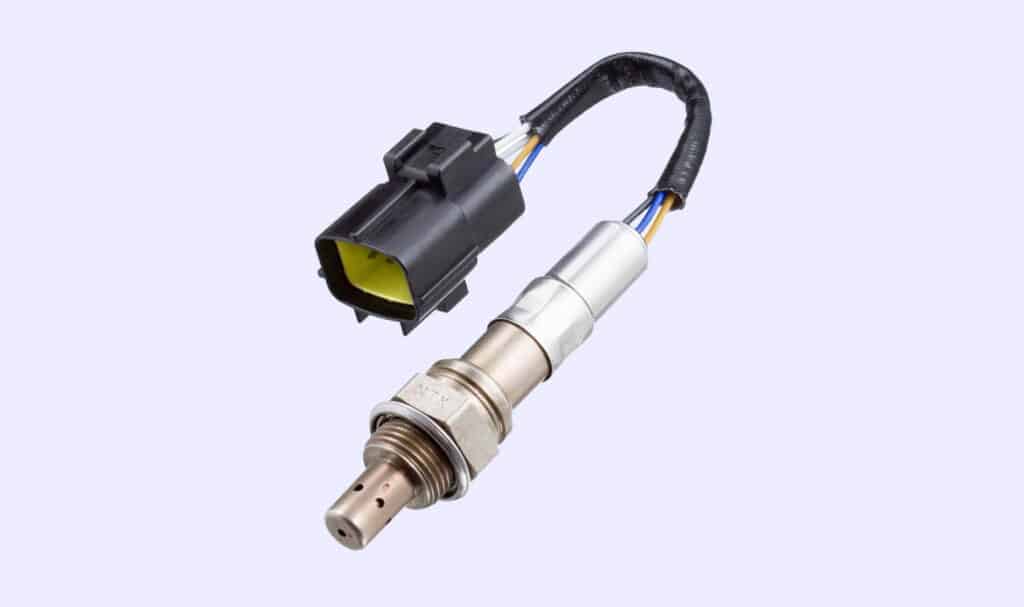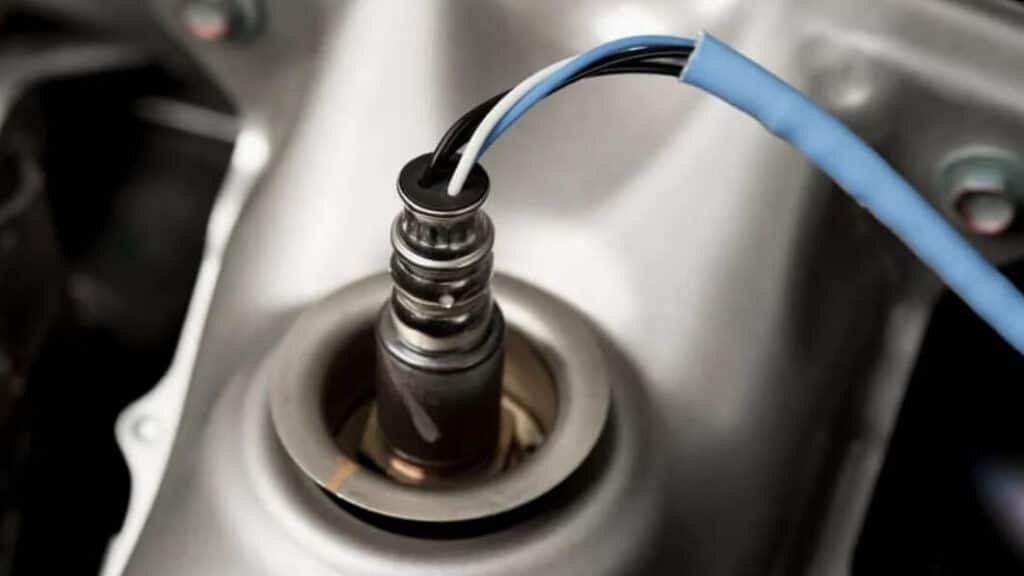If you’re experiencing poor fuel economy or engine performance, it could be a sign that your vehicle’s oxygen sensor needs to be replaced. In this guide, we’ll explore what an oxygen sensor is, how much it will cost to replace one in Canada, the symptoms of a faulty oxygen sensor, and how you can make it last longer.
What is an Oxygen Sensor?
An oxygen sensor, also known as an O2 sensor, is a small electronic device that measures the amount of oxygen in the exhaust gases of a vehicle’s engine. This information is then sent to the engine control module, which adjusts the air-fuel ratio to optimize engine performance and fuel efficiency.

How Much Will it Cost to Replace an Oxygen Sensor in Canada?
The cost of replacing an oxygen sensor in Canada can vary depending on the make and model of your vehicle, as well as the location and type of repair shop you choose. On average, you can expect to pay between $250 to $500 for parts and labour. Labour time can range from 1-2 hours.
What are the Symptoms of a Faulty Oxygen Sensor?
Symptoms of a faulty oxygen sensor can vary, but some common signs include:
1. Check engine light: A malfunctioning oxygen sensor can trigger the check engine light, indicating a problem with the sensor or related systems.
2. Poor engine performance: A faulty oxygen sensor can cause issues such as rough idling, hesitation, stalling, or misfires, affecting overall engine performance.
3. Reduced fuel efficiency: A malfunctioning oxygen sensor can result in the engine control module making incorrect adjustments to the air-fuel mixture, leading to decreased fuel efficiency and increased fuel consumption.
4. Increased emissions: A faulty oxygen sensor can cause increased emissions due to improper combustion, potentially leading to failed emissions tests or environmental harm.
5. Rough idling or engine misfires: A malfunctioning oxygen sensor can affect engine combustion, resulting in rough idling or misfires.
6. Poor acceleration or power loss: A faulty oxygen sensor can cause the engine to run too rich or too lean, leading to sluggish acceleration or power loss.
7. Unusual engine noises: A malfunctioning oxygen sensor can cause the engine to produce unusual noises, such as knocking or pinging sounds, due to improper combustion.
How Long Does an Oxygen Sensor Last?
The lifespan of an oxygen sensor can vary depending on the driving conditions and maintenance of the vehicle. Generally, an oxygen sensor can last between 50,000 to 100,000 kilometers.
How does an Oxygen Sensor Become Defective?
An oxygen sensor can become defective due to several factors, including:
1. Wear and tear: Over time, oxygen sensors can degrade or wear out due to constant exposure to heat, pressure changes, and exhaust gases.
2. Contamination: Dirt, dust, debris, or substances like oil and coolant can accumulate on the sensor, impairing its ability to provide accurate readings.
3. Corrosion: Moisture or chemicals in the exhaust gases can cause corrosion on the sensor’s electrical contacts or wiring, leading to signal loss or intermittent functionality.
4. Electrical issues: Wiring or connection problems, such as damaged wires, corroded connections, or loose connectors, can result in intermittent or complete loss of signal from the oxygen sensor to the engine control module.
5. Damage from external factors: The oxygen sensor’s location in the exhaust system makes it susceptible to damage from external factors such as collisions, extreme temperature fluctuations, or exposure to harsh chemicals.
6. Manufacturing defects: In some cases, a sensor may have inherent manufacturing defects that cause it to fail prematurely. Replacing the faulty sensor with a high-quality component can help ensure reliable performance.
How A Faulty Oxygen Sensor can affect other systems in the car?
• Engine performance: A faulty oxygen sensor can lead to poor engine performance, causing rough idling, hesitation, stalling, or misfires.
• Fuel efficiency: A malfunctioning oxygen sensor can result in incorrect air-fuel mixture adjustments, leading to reduced fuel efficiency and increased fuel consumption.
• Emissions: A faulty oxygen sensor can cause increased emissions due to improper combustion, potentially leading to failed emissions tests or environmental harm.
• Catalytic converter: A malfunctioning oxygen sensor may lead to damage to the catalytic converter, as it may not effectively reduce harmful emissions.
• Ignition system: A faulty oxygen sensor can affect the ignition system, leading to poor engine performance and responsiveness.
• Engine wear: Improper combustion caused by a malfunctioning oxygen sensor can lead to increased engine wear and potential damage to engine components.
• Transmission: In some cases, a faulty oxygen sensor can impact transmission shifting patterns, leading to rough or erratic gear changes
Is it Safe to Drive with a Faulty Oxygen Sensor?
Driving with a faulty oxygen sensor can have several negative consequences, potentially affecting the safety and reliability of your vehicle. The oxygen sensor is responsible for monitoring the level of oxygen in the exhaust gases, providing essential data to the engine control module (ECM) for optimizing the air-fuel mixture. A malfunctioning oxygen sensor can lead to poor engine performance, decreased fuel efficiency, and increased emissions.
While it may not be immediately hazardous to drive with a faulty oxygen sensor, doing so can result in a variety of issues that may compromise the vehicle’s safety and performance. An improperly functioning oxygen sensor can cause the engine to run too rich or too lean, leading to rough idling, poor acceleration, or even engine misfires. Over time, this can cause damage to the engine, catalytic converter, or other components due to improper combustion and increased emissions. Additionally, driving with a faulty oxygen sensor can result in poor fuel efficiency, causing increased fuel consumption and higher costs. To maintain the safety and reliability of your vehicle, it’s recommended to address any oxygen sensor issues as soon as they arise.
How Can I Make My Oxygen Sensor Last Longer?
Here are some tips to help extend the life of your oxygen sensor:
• Use high-quality gasoline and perform regular maintenance on your vehicle.
• Avoid driving with a low fuel level, which can cause damage to the sensor.
• Check the oxygen sensor regularly for signs of wear and tear.

Conclusion
If you’re experiencing any of the symptoms of a faulty oxygen sensor, it’s important to have it replaced as soon as possible to avoid further damage to your vehicle. By following the tips outlined in this guide, you can help extend the life of your oxygen sensor and keep your vehicle running smoothly.
Next Steps
Book Your Oxygen Sensor Replacement Service
The service most frequently booked by those who read this article is Oxygen Sensor Replacement. Uchanics’ expert technicians make the process even more convenient by bringing the service right to your doorstep. We perform this job at your home or office, covering over 40 cities in Ontario, including Oshawa, Ajax, Toronto, Scarborough, Mississauga, Brampton, and more. Our commitment to excellence has earned us more than 700 glowing 5-star reviews. Choose Uchanics for your Oxygen Sensor Replacement and experience unparalleled convenience and top-quality service.
